1072
The Rise and Fall Deytroyta
In 1950, he lived here nearly two million people, it was a city of wide boulevards, luxury hotels in the Art Deco style, picturesque private mansions. Life here is in full swing, and it seemed like the end of the prosperity of Detroit will not. After only 60 years, it left more than a million inhabitants, emptied entire neighborhoods, huge skyscrapers appeared abandoned, and the drug trade flourished in the streets. Onliner.by studied the dramatic fate of the automotive capital of the world and tried to understand how the "Paris of the West" and the sister city of Minsk fell paradoxical victim of its own success.
So, this post will be 70 pictures, and text.

Settlement on the banks of the Detroit River, which forms today the US-Canadian border, there was at the beginning of the XVIII century. Occupying a central place in the Great Lakes, the city quickly grew into a major industrial center, where the beginning of the XX century already lived 285,000 people. From here came the big industry and the related money - Detroit quickly built up representative buildings that make the city even earned the nickname "Paris of the West."

More

More

But, as it turns out, this "golden age" of Detroit was still ahead. It began early in the morning June 4, 1896 in does not seem to be remarkable at first glance the building. On this day, the chief engineer of Edison Illuminating Company and part-time inventor amateur started in the former coal shed at the house №58 on Begley Street in Detroit engine of his first "horseless carriage." Inventor, turned the barn into a real garage, named Henry Ford. Future Motor City was born.

In 1904, at the Ford Motor Company to Detroit Pickett Street appeared first own factory building, a little later in the neighborhood to build similar structures of Studebaker and Cadillac and bodywork company Fisher Body.

More

More

General Motors, Ford, Chrysler, Chevrolet - the history of almost all major car manufacturers in the United States is directly linked to Detroit. Here and in its immediate suburbs from the beginning of the XX century were their factories and headquarters. Against the backdrop of the country's festering automobile boom in the "Roaring Twenties" competing companies trying to outdo each other in architecture. Thus, for example, looks like a 15-storey Cadillac Place, a huge, covering an entire city block office complex, where from 1923 to 2001 housed the headquarters of General Motors.
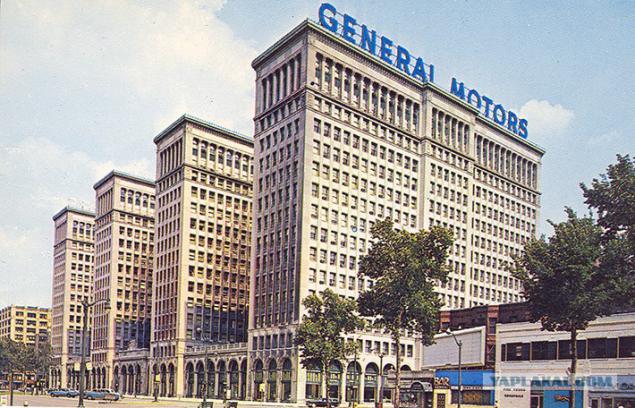
Across the road the brothers Fisher, owner body of Fisher Body, built a 30-storey 130-meter Fisher Building.

Car giants become the locomotive of the economy in Detroit. The city has experienced explosive population growth: in 1900 there lived 285 thousand people, all 30 years - more than 1, 5 million. A lot of money, appeared in the Motor City, call the appropriate building boom. Skyscrapers, luxury hotels, shops and houses numerous engineering managers of corporations - Detroit look me in front of a generation, and it seemed only a bright future ahead.

More

More
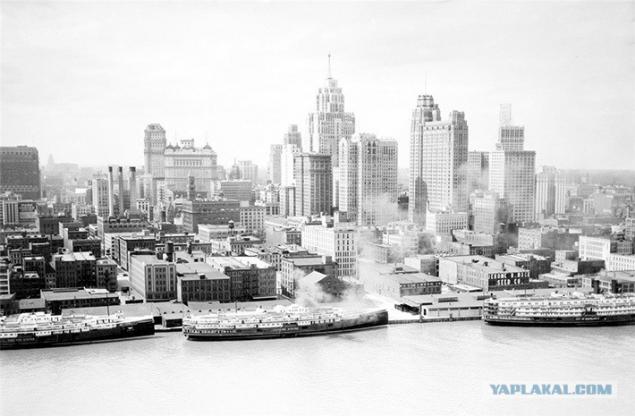
More surprising that the "golden age" of Detroit was so short-lived, and the automotive industry that produced prosperity of the town in the 1920s, in fact, he killed him, and after a further 40 years.
Detroit's population peaked in 1950 reached. In the city's population 1.86 million people, the inhabitants of the metropolis and its suburbs, there were 3.22 million, Detroit was the fourth in the number of residents of US cities. Having gone through the army orders to rise in the next few years of the Second World War, Motor City actually became a hostage of a mass influx of cheap labor here.
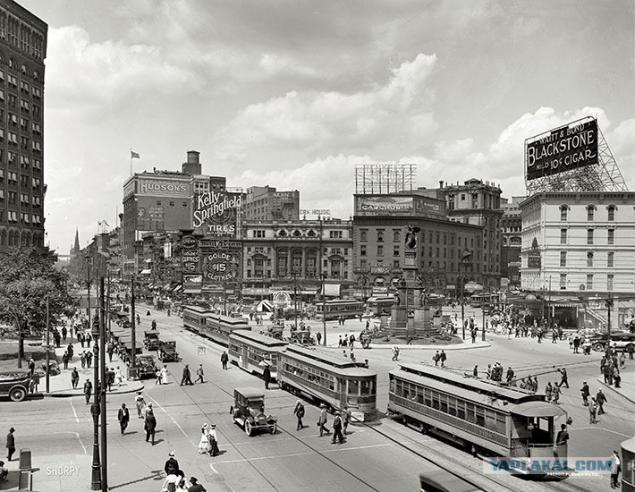
More

The new residents of the city were mostly poorly educated and low-skilled African Americans from the southern states of the country. Their mass moving here, the Second Great Migration, was one of the reasons for the sharp activation of t. N. white flight, «white flight" - white detroyttsev pulled from overcrowded Negro population of the central part of the city in a quiet affluent suburbs

A role, of course, played and advertising policy automakers. Propaganda buy your own car, which has become a symbol of the success of the person and family, his job done. Public transport went out of fashion, to use it was undervalued, giving poor people of the lower classes. Despite the status of one million people, Detroit did not appear his subway. Have the car sharply increased mobility of the population and only contributed to the strengthening of suburbanization, the growth of suburbs and urban sprawl, moving against the background of mass motorization affluent urban residents from the center, "multi-storey" of the city in their own houses in its suburbs.

More
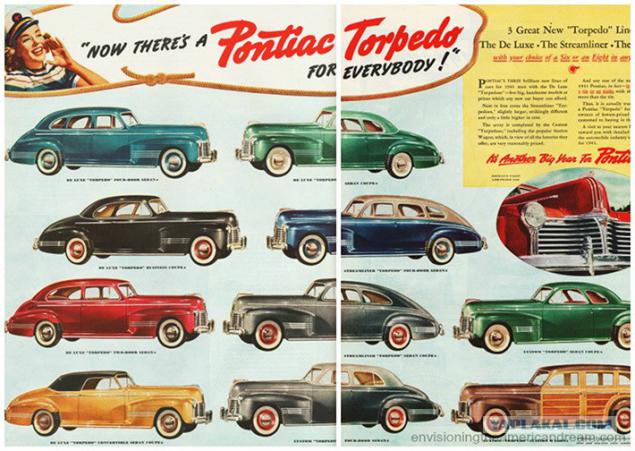
More

Detroit was probably the most striking example of "white flight" in the United States. Place the wealthy representatives of the working and middle classes occupied racial minorities, ironically, became in the end a majority, albeit in a particular center of the automotive capital of the world. Its population in 2010 fell to 2, 5 times to 710 000 people, and almost 83% of them now make "black" Americans.

Since the 1950s, Detroit began to decline rapidly. Along with the white inhabitants of the city left their taxes, the new population has brought with it a high crime rate. Budget Motor City ceased to be filled, the city was forced to cut guide social programs and infrastructure spending, which further contributed to the outflow of paying people to the suburbs. Huge built in the "Roaring Twenties" hotel, office and residential buildings were empty, there was nobody to use them - Detroit in his new form scared his former residents and visiting guests "Motor City».
Hotel Lee Plaza, finally abandoned in the early 1990s.
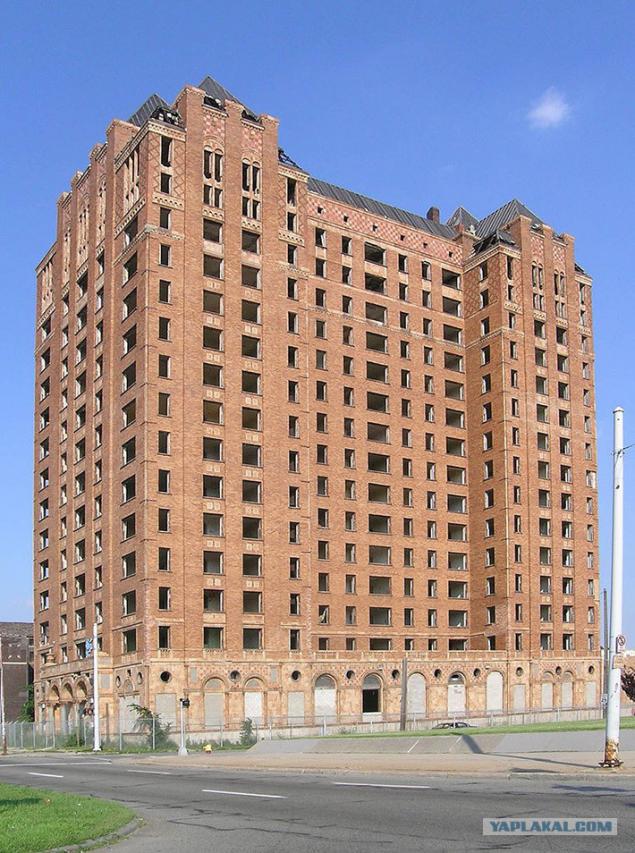
More

Park Avenue Hotel.
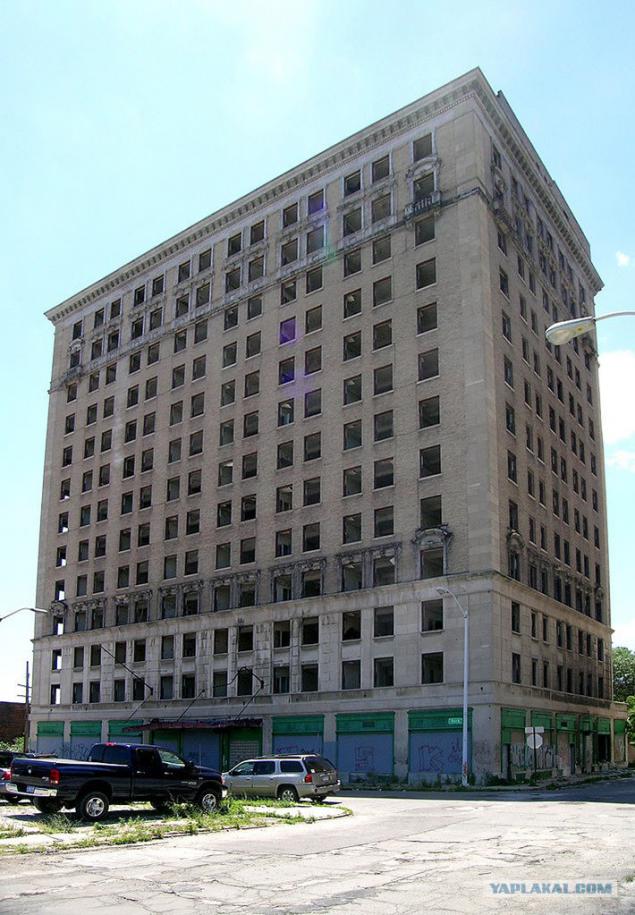
38-storey 145-meter skyscraper is empty Book Tower from the late 1980s.

Another victim of the mass motorization population fell railways. Giant stations-palaces, built in the early XX century, during the heyday of passenger rail transport were not wanted. Detroit was no exception. 18-storey Michigan Central Station, at the time of construction in 1913, the highest railway station of the planet, since 1950 gradually emptied. Closed shops, restaurants, waiting room, slid tenants of office premises in the high-altitude part of the complex.

More

Finally, January 6, 1988 the last train departed from here, Detroit station finally closed. Despite its status as an architectural monument and has repeatedly announced plans for its reconstruction needs of the city (for example, placing the police department immediately or casino), it is still abandoned and used except as a film set of films and television series. The symbol of the glorious past.
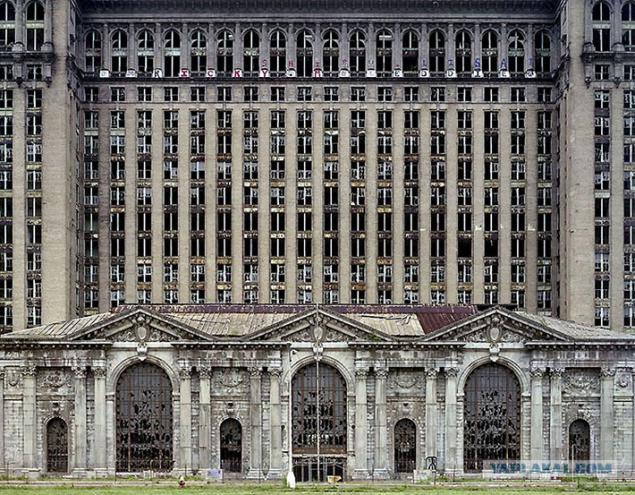
The modern station of the city reflects its good depressed now.
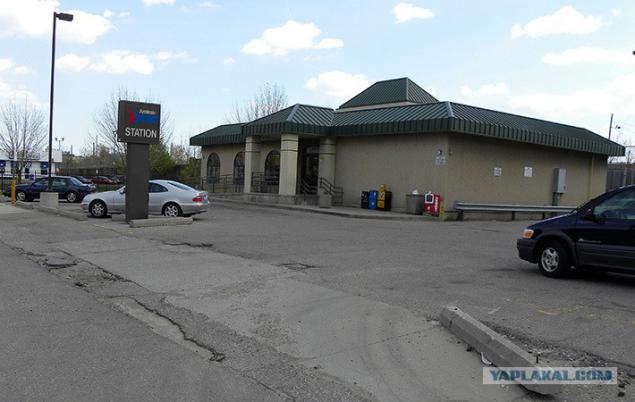
Before leaving, people threw not only individual buildings, emptied entire neighborhoods of houses, schools, libraries, churches, unnecessary new masters of the city.

More

More

More

More
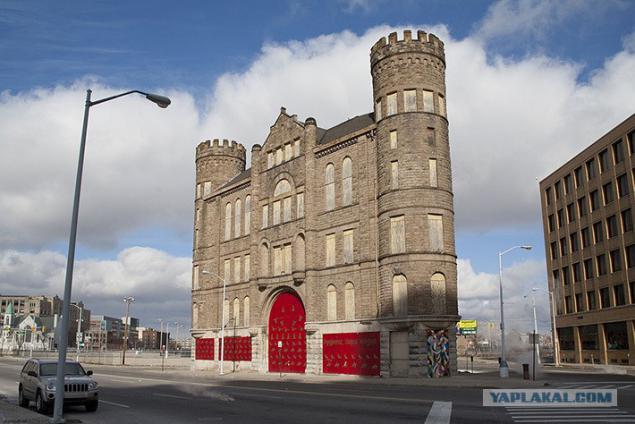
Some buildings still stand decorations to the anti-Utopias of the world after a nuclear war, which has already demolished. Where previously bubbling with life, are now spread wasteland, which the Americans have come up with even a special term - urban prairie, prairie city.

More

More

In the summer of 1967 against the backdrop of the civil rights struggle in Detroit within 5 days of riots shook the Negro. 43 people were killed and looted stores in 2509, 412 houses burned down - such a price was at the civil rights. In 1966 he left the city of 22 thousand people, after a hot summer multicultural 1967 - almost 70 thousand.

More

The pictures of that time Detroit looks more like Stalingrad and Minsk after the occupation.

More

To all the other misfortunes Detroit defeated deindustrialization. It has become particularly evident after the oil crisis of the mid 1970s. Giant voracious American cars to the nines lost economical cars Japanese or German production. Industry, the former foundation of economic prosperity Detroit waited hard times. Factories were closed one after the other, tens of thousands of people lost their jobs and, again, left the city. Following the automotive industry suffered iron and steel and other heavy industries, which are also a lot of companies were in Detroit and the surrounding area.

More
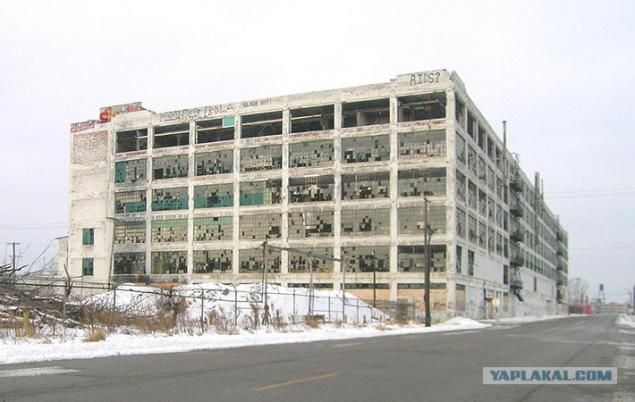
More

This is not Chernobyl Pripyat, a former factory Packard in Detroit.

More

More

But instead fallen into the most severe depression in heavy industry received a stunning development of new industries, unfortunately, true shadow. In the 1970s, Detroit swept the heroin epidemic, in the 1980s the fashion included crack on the streets of the city came out African-American gang. From the "Paris of the West" Detroit has become the most dangerous city in the United States, its abandoned buildings, factories, whole neighborhoods have become a good breeding ground for drug trafficking.

No coincidence that Detroit was the site of action, for example, the movie series "Robocop", and although RoboCop struggle for the purity of the Detroit streets set in the near future, in fact for the former world avtostolitsy it was already come a harsh reality.

More
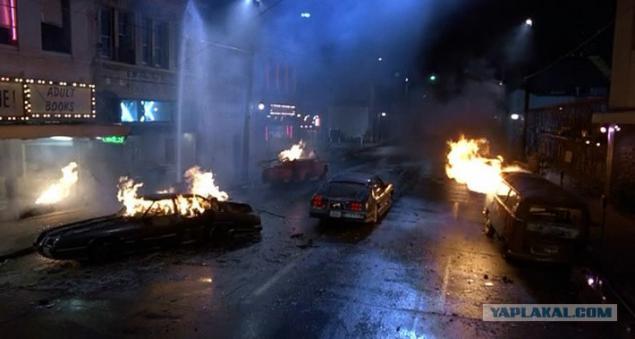
More
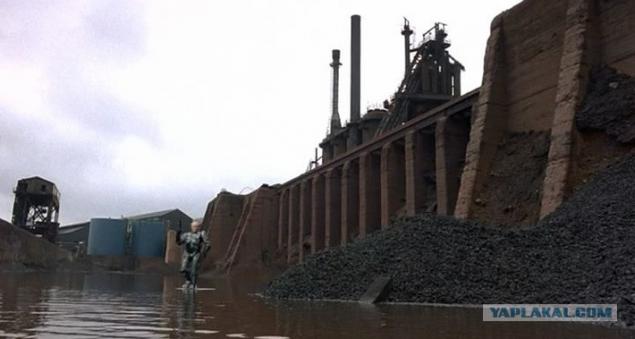
More

We can not say that the authorities in Detroit with hopeless doom watched what happened to their city. Attempts revitalization, resurrection life in it have been actively undertaken back in the 1970s. In 1977, on the embankment of the river opened the first stage of a multifunctional complex, has received a name that speaks Renaissance Center. Four 39-storey office towers surround the central 73-storey high-rise building, which houses the hotel.

The podium was opened shopping center, restaurants, cinemas and other infrastructure, whose task was to breathe new life into downtown Detroit. It was held here the well-known International Motor Show in Renaissance Center in 2001 and is the headquarters of the corporation General Motors.
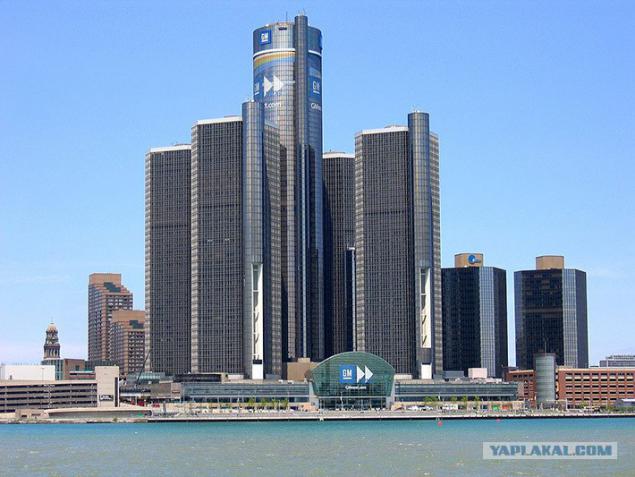
Another attempt to find a seemingly hopeless patient was the opening of a new application then just 3 major casinos. Fame and success of Las Vegas to Detroit, of course, is not repeated, but a major gambling center of the northeastern United States has become.
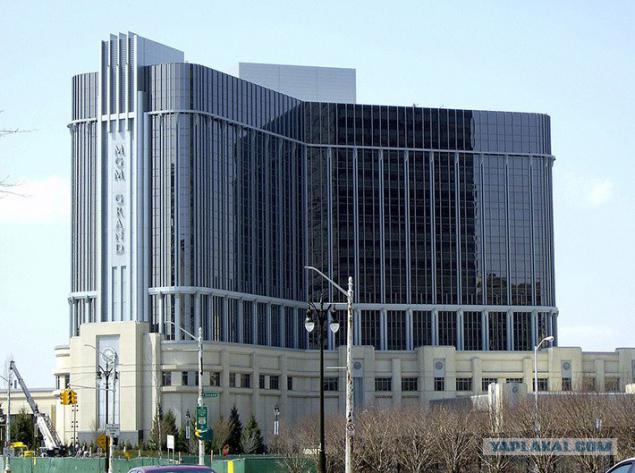
More
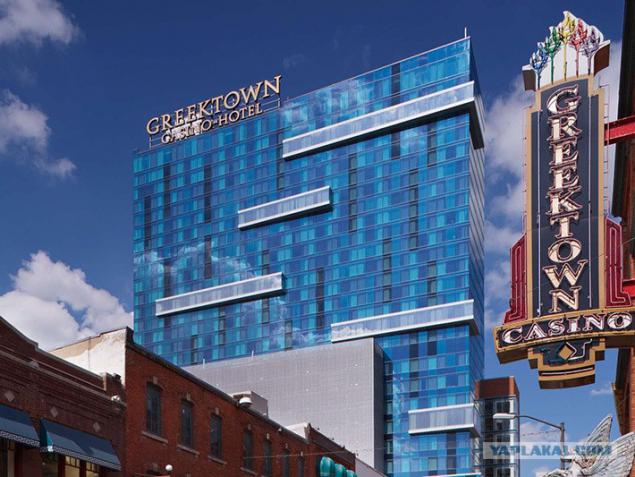
More

DETROIT - place of deployment as 4 famous sports teams, including the repeated Stanley Cup Detroit Red Wings. It is the center of musical culture. Detroit Rock City, the title song VIA Kiss, was settled in the same city the nickname as the Motor City

Municipal authorities and private investors find the money and the reconstruction of some of the city's iconic objects. In 2008, after extensive renovations reopened two historic Detroit Grand Hotel. Book Cadillac Hotel in 1924 cost $ 200 million.

Return to Life Fort Shelby Hotel (1912) was worth $ 82 million. Tourism has been announced as the new savior of the city.

But it is only a few examples of successful investment activities in Detroit, which, alas, the general trend could not break. During the first decade of the XXI century, the city has left another 240 000 people, the average annual income per household is made up of only $ 26,000, at the poverty line and it is home to a third of the local families. Detroit continues to lead among major US cities in the number of murders, there are still about 40 000 vacant homes and land, and the average value of the transaction for buying and selling real estate is just $ 7,500, ridiculous even by the standards of the Minsk money.
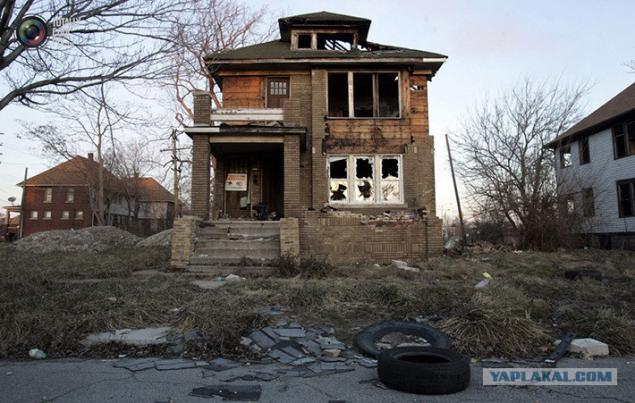
Despite the best efforts of the municipal and federal authorities in Detroit still no one wants to live. The culmination of the dramatic fall of the city into an economic abyss became its bankruptcy this summer - has accumulated on the astronomical sum of $ 18, 5 billion debt in the end serve the Detroit became unable to.
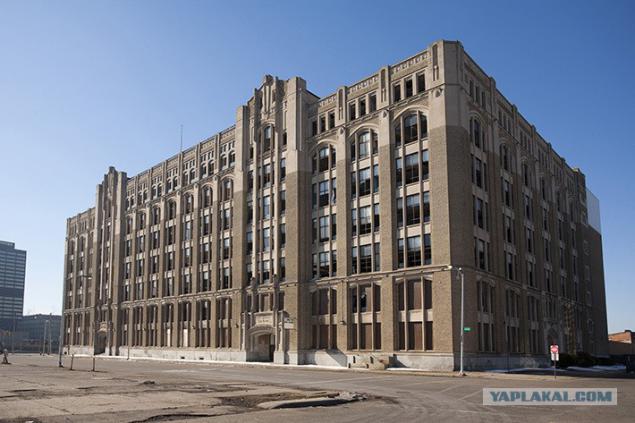
More

More

The central areas of Detroit still look pretty decent, recalling all the tourists appeared here on the first half of the XX century, when a large automobile industry has brought the city fame and money. The outskirts of the same for the most part continue to deteriorate, demonstrating all the disadvantages of mono-centric economy, when the path of prosperity to forget, the capital of the world until the ghost town can be completed in a few years.

More

More

More
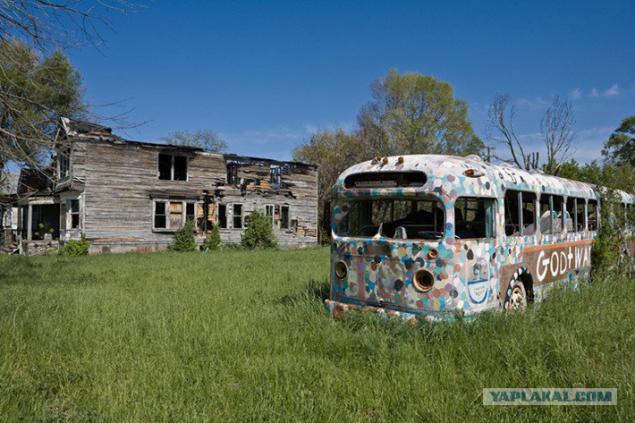
More

More

That's all! Thank you all for terpenie.Istochnik.

Source:
So, this post will be 70 pictures, and text.

Settlement on the banks of the Detroit River, which forms today the US-Canadian border, there was at the beginning of the XVIII century. Occupying a central place in the Great Lakes, the city quickly grew into a major industrial center, where the beginning of the XX century already lived 285,000 people. From here came the big industry and the related money - Detroit quickly built up representative buildings that make the city even earned the nickname "Paris of the West."

More

More

But, as it turns out, this "golden age" of Detroit was still ahead. It began early in the morning June 4, 1896 in does not seem to be remarkable at first glance the building. On this day, the chief engineer of Edison Illuminating Company and part-time inventor amateur started in the former coal shed at the house №58 on Begley Street in Detroit engine of his first "horseless carriage." Inventor, turned the barn into a real garage, named Henry Ford. Future Motor City was born.

In 1904, at the Ford Motor Company to Detroit Pickett Street appeared first own factory building, a little later in the neighborhood to build similar structures of Studebaker and Cadillac and bodywork company Fisher Body.

More

More

General Motors, Ford, Chrysler, Chevrolet - the history of almost all major car manufacturers in the United States is directly linked to Detroit. Here and in its immediate suburbs from the beginning of the XX century were their factories and headquarters. Against the backdrop of the country's festering automobile boom in the "Roaring Twenties" competing companies trying to outdo each other in architecture. Thus, for example, looks like a 15-storey Cadillac Place, a huge, covering an entire city block office complex, where from 1923 to 2001 housed the headquarters of General Motors.

Across the road the brothers Fisher, owner body of Fisher Body, built a 30-storey 130-meter Fisher Building.

Car giants become the locomotive of the economy in Detroit. The city has experienced explosive population growth: in 1900 there lived 285 thousand people, all 30 years - more than 1, 5 million. A lot of money, appeared in the Motor City, call the appropriate building boom. Skyscrapers, luxury hotels, shops and houses numerous engineering managers of corporations - Detroit look me in front of a generation, and it seemed only a bright future ahead.

More

More

More surprising that the "golden age" of Detroit was so short-lived, and the automotive industry that produced prosperity of the town in the 1920s, in fact, he killed him, and after a further 40 years.
Detroit's population peaked in 1950 reached. In the city's population 1.86 million people, the inhabitants of the metropolis and its suburbs, there were 3.22 million, Detroit was the fourth in the number of residents of US cities. Having gone through the army orders to rise in the next few years of the Second World War, Motor City actually became a hostage of a mass influx of cheap labor here.

More

The new residents of the city were mostly poorly educated and low-skilled African Americans from the southern states of the country. Their mass moving here, the Second Great Migration, was one of the reasons for the sharp activation of t. N. white flight, «white flight" - white detroyttsev pulled from overcrowded Negro population of the central part of the city in a quiet affluent suburbs

A role, of course, played and advertising policy automakers. Propaganda buy your own car, which has become a symbol of the success of the person and family, his job done. Public transport went out of fashion, to use it was undervalued, giving poor people of the lower classes. Despite the status of one million people, Detroit did not appear his subway. Have the car sharply increased mobility of the population and only contributed to the strengthening of suburbanization, the growth of suburbs and urban sprawl, moving against the background of mass motorization affluent urban residents from the center, "multi-storey" of the city in their own houses in its suburbs.

More

More

Detroit was probably the most striking example of "white flight" in the United States. Place the wealthy representatives of the working and middle classes occupied racial minorities, ironically, became in the end a majority, albeit in a particular center of the automotive capital of the world. Its population in 2010 fell to 2, 5 times to 710 000 people, and almost 83% of them now make "black" Americans.

Since the 1950s, Detroit began to decline rapidly. Along with the white inhabitants of the city left their taxes, the new population has brought with it a high crime rate. Budget Motor City ceased to be filled, the city was forced to cut guide social programs and infrastructure spending, which further contributed to the outflow of paying people to the suburbs. Huge built in the "Roaring Twenties" hotel, office and residential buildings were empty, there was nobody to use them - Detroit in his new form scared his former residents and visiting guests "Motor City».
Hotel Lee Plaza, finally abandoned in the early 1990s.

More

Park Avenue Hotel.

38-storey 145-meter skyscraper is empty Book Tower from the late 1980s.

Another victim of the mass motorization population fell railways. Giant stations-palaces, built in the early XX century, during the heyday of passenger rail transport were not wanted. Detroit was no exception. 18-storey Michigan Central Station, at the time of construction in 1913, the highest railway station of the planet, since 1950 gradually emptied. Closed shops, restaurants, waiting room, slid tenants of office premises in the high-altitude part of the complex.

More

Finally, January 6, 1988 the last train departed from here, Detroit station finally closed. Despite its status as an architectural monument and has repeatedly announced plans for its reconstruction needs of the city (for example, placing the police department immediately or casino), it is still abandoned and used except as a film set of films and television series. The symbol of the glorious past.

The modern station of the city reflects its good depressed now.

Before leaving, people threw not only individual buildings, emptied entire neighborhoods of houses, schools, libraries, churches, unnecessary new masters of the city.

More

More

More

More

Some buildings still stand decorations to the anti-Utopias of the world after a nuclear war, which has already demolished. Where previously bubbling with life, are now spread wasteland, which the Americans have come up with even a special term - urban prairie, prairie city.

More

More

In the summer of 1967 against the backdrop of the civil rights struggle in Detroit within 5 days of riots shook the Negro. 43 people were killed and looted stores in 2509, 412 houses burned down - such a price was at the civil rights. In 1966 he left the city of 22 thousand people, after a hot summer multicultural 1967 - almost 70 thousand.

More

The pictures of that time Detroit looks more like Stalingrad and Minsk after the occupation.

More

To all the other misfortunes Detroit defeated deindustrialization. It has become particularly evident after the oil crisis of the mid 1970s. Giant voracious American cars to the nines lost economical cars Japanese or German production. Industry, the former foundation of economic prosperity Detroit waited hard times. Factories were closed one after the other, tens of thousands of people lost their jobs and, again, left the city. Following the automotive industry suffered iron and steel and other heavy industries, which are also a lot of companies were in Detroit and the surrounding area.

More

More

This is not Chernobyl Pripyat, a former factory Packard in Detroit.

More

More

But instead fallen into the most severe depression in heavy industry received a stunning development of new industries, unfortunately, true shadow. In the 1970s, Detroit swept the heroin epidemic, in the 1980s the fashion included crack on the streets of the city came out African-American gang. From the "Paris of the West" Detroit has become the most dangerous city in the United States, its abandoned buildings, factories, whole neighborhoods have become a good breeding ground for drug trafficking.

No coincidence that Detroit was the site of action, for example, the movie series "Robocop", and although RoboCop struggle for the purity of the Detroit streets set in the near future, in fact for the former world avtostolitsy it was already come a harsh reality.

More

More

More

We can not say that the authorities in Detroit with hopeless doom watched what happened to their city. Attempts revitalization, resurrection life in it have been actively undertaken back in the 1970s. In 1977, on the embankment of the river opened the first stage of a multifunctional complex, has received a name that speaks Renaissance Center. Four 39-storey office towers surround the central 73-storey high-rise building, which houses the hotel.

The podium was opened shopping center, restaurants, cinemas and other infrastructure, whose task was to breathe new life into downtown Detroit. It was held here the well-known International Motor Show in Renaissance Center in 2001 and is the headquarters of the corporation General Motors.

Another attempt to find a seemingly hopeless patient was the opening of a new application then just 3 major casinos. Fame and success of Las Vegas to Detroit, of course, is not repeated, but a major gambling center of the northeastern United States has become.

More

More

DETROIT - place of deployment as 4 famous sports teams, including the repeated Stanley Cup Detroit Red Wings. It is the center of musical culture. Detroit Rock City, the title song VIA Kiss, was settled in the same city the nickname as the Motor City

Municipal authorities and private investors find the money and the reconstruction of some of the city's iconic objects. In 2008, after extensive renovations reopened two historic Detroit Grand Hotel. Book Cadillac Hotel in 1924 cost $ 200 million.

Return to Life Fort Shelby Hotel (1912) was worth $ 82 million. Tourism has been announced as the new savior of the city.

But it is only a few examples of successful investment activities in Detroit, which, alas, the general trend could not break. During the first decade of the XXI century, the city has left another 240 000 people, the average annual income per household is made up of only $ 26,000, at the poverty line and it is home to a third of the local families. Detroit continues to lead among major US cities in the number of murders, there are still about 40 000 vacant homes and land, and the average value of the transaction for buying and selling real estate is just $ 7,500, ridiculous even by the standards of the Minsk money.

Despite the best efforts of the municipal and federal authorities in Detroit still no one wants to live. The culmination of the dramatic fall of the city into an economic abyss became its bankruptcy this summer - has accumulated on the astronomical sum of $ 18, 5 billion debt in the end serve the Detroit became unable to.

More

More

The central areas of Detroit still look pretty decent, recalling all the tourists appeared here on the first half of the XX century, when a large automobile industry has brought the city fame and money. The outskirts of the same for the most part continue to deteriorate, demonstrating all the disadvantages of mono-centric economy, when the path of prosperity to forget, the capital of the world until the ghost town can be completed in a few years.

More

More

More

More

More

That's all! Thank you all for terpenie.Istochnik.

Source:























